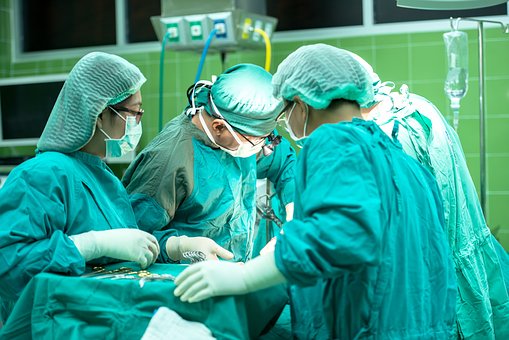Vertebroplasty, and kyphoplasty, which is a derived technique, are minimally invasive surgical procedures indicated in the treatment of vertebral fractures, both of a traumatic nature and of pathological origin. They can also help treat osteoporosis or even some secondary cancers.
What is vertebroplasty
The vertebroplasty procedure is percutaneous, which means that it does not require any incision or stitches, but just a small hole in the skin through which to insert a cannula. This is carefully positioned at the vertebra to be treated with the videofluoroscopic guide, a radiographic technique that can be used during surgery.
Through the cannula directly into the vertebral body, that is into the bone, a special polymer called cement is inserted which fills the natural porosity of the bone and solidifies in a short time, giving the vertebra a density and greater strength. The substances that can be injected are different and are divided according to the physical characteristics (high or low viscosity) that make them suitable for the various pathological conditions to be treated or based on the biological features that make them ideal for use at different ages.
The best neurosurgeon in Gurgaon is Dr. Aditya Gupta of Artemis Hospital. He has over 21 years of experience in treating spinal problems. Vertebroplasty and Kyphoplasty Cost in India is about USD 5700, which includes a total of 6 days stay in the country, including a day in the hospital.
What is kyphoplasty
A variant of vertebroplasty used, only in very limited cases, is kyphoplasty. This, in addition to the cement injection, involves the use of a balloon positioned in the vertebral body and inflated to restore its normal height and size.
In this way, with the subsequent injection of cement, an adequate vertebral thickness is
restored.
Mechanical Kyphoplasty
A further, more modern variant of the procedure, which takes place inside the so-called vertebra body, is mechanical kyphoplasty. In this case, a balloon is not placed in the vertebral body, but rather a small metallic retractor, a sort of sophisticated jack with a function similar to that used for the car.
This technique is particularly useful in restoring the original height of the vertebral body, even in the case of the partial sinking of a single region or sinking of the entire plate, i.e., the upper flat part of the vertebra (in which case two devices are usually implanted).
Mechanical kyphoplasty is all the more effective in restoring the normal curvature of the back if it is used close to the traumatic event. The ideal is within 15 days of fracture.
When vertebroplasty is needed
As mentioned, vertebroplasty is a procedure for the treatment of vertebral fractures of various origins. A vertebra can, in fact, suffer fractures or microfractures for the following reasons –
· Trauma, due to an accident or fall
· Mechanical stress, caused by being excessively overweight or extreme sports
· Osteoporosis, which weakens bone mass
· Chemotherapy reduces bone mass in a similar way to osteoporosis
· Metastasis from some tumors
In all these cases, vertebroplasty or kyphoplasty intervention aims to eliminate bone pain by restoring the integrity of the vertebral bodies. In the case of osteoporosis and oncological pathologies, however, vertebroplasty is intended solely as an aid to other prescribed therapies.
Vertebroplasty results
Patients who undergo vertebroplasty generally tolerate the intervention very well, which is performed under local anesthesia and with only one day’s hospitalization.
Pain resolves completely in a very high percentage of patients within 15 days of the procedure. Like all percutaneous interventions, vertebroplasty does not involve blood loss. The chances of a lesion of the surrounding structures (in particular nerve tissue) due to escaped cement outside the vertebra exist but can be minimized by the use of high viscosity cements.
The duration of hospitalization depends, of course on the complexity of the surgical procedure and on the need or otherwise to associate more procedures (for example, vertebroplasty and vertebral stabilization). In the case of simple vertebroplasty, the patient can generally go home the same day, while if other procedures are to be done, the hospital stay can even reach 4-5 days.




